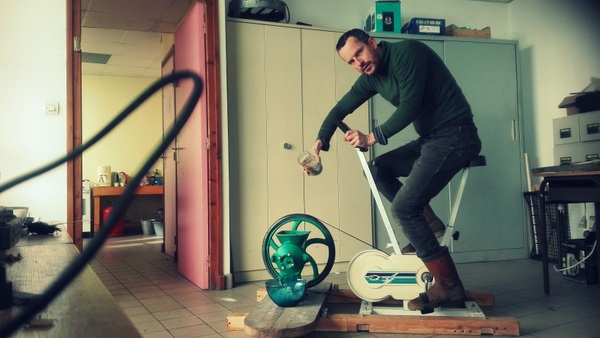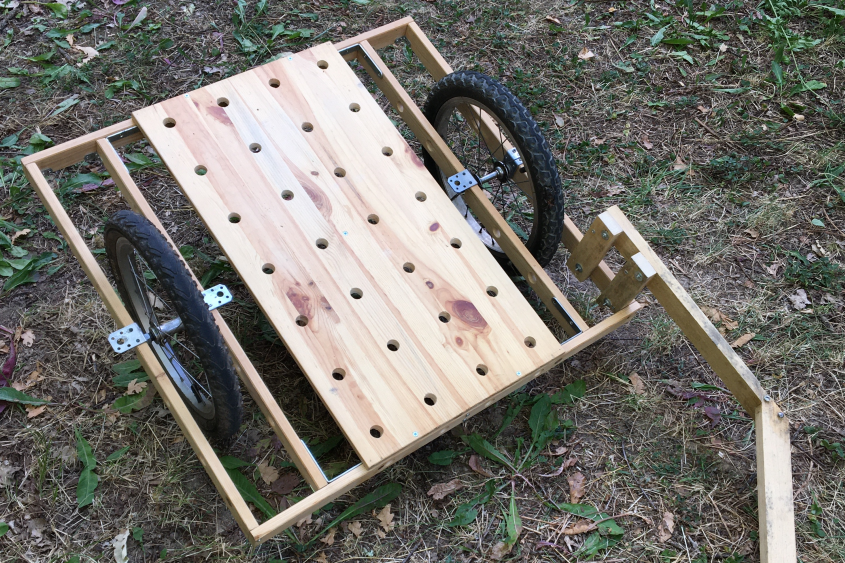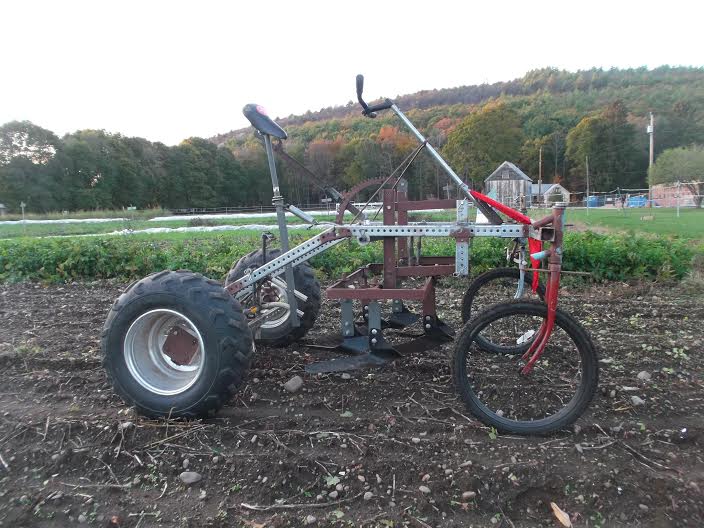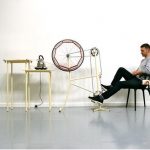Pedal-Powered Grain Mill
DIY Wooden Bike Trolley
Marie Verdeil made a tutorial for a simple wooden bike trolley. It is available in English and French on the Low Tech Lab wiki.
Method to create a simple bike trolley, using up-cycled materials. Easily fixated to every bike (adult size). Holes on the board help attach any kind of cargo. It’s made out of wood and simple hand tools, no welding required. Dimensions are detailed and can easily be adapted to the material available.
I tried to create a trolley, which can replace the car to go to the market / grocery shopping. No need to transport heavy cargo, but big objects (cardboard boxes, crates, wood, etc.) – Therefore it needs to be easily adaptable, with the option to fix a crate on the board. + Priority goes to second-hand materials!
Bike Powered Catamaran Control
In the 2017 America’s Cup, the Emirates Team New Zealand introduced stationary bikes instead of hand cranks to power the hydraulic system that steers the boat. Because our legs are stronger than our arms, pedal powered ‘grinding’ allows for quicker tacking and gybing in a race. The innovation could also be useful to reduce the required manpower for a new age of sail.
Bicycle Powered Thresher
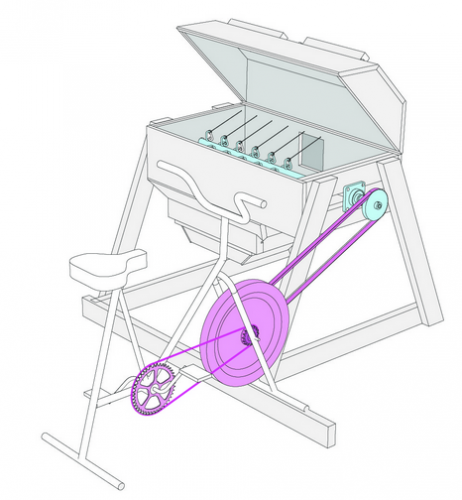 Farmhack has complete instructions for making a bicycle powered thresher. It works on various crops including dry beans, wheat, rice, rye, einkorn, and lupine, and threshes about one pound per minute.
Farmhack has complete instructions for making a bicycle powered thresher. It works on various crops including dry beans, wheat, rice, rye, einkorn, and lupine, and threshes about one pound per minute.
This is the first of three tools for small scale grain processing. The other two tools are the bicycle powered fanning mill and the bicycle powered de-huller/flour mill.
Unlike some “hacks” for small farmers, the Grain Bikes don’t solve an acknowledged problem so much as create new opportunities for small farmers. Dry beans and grains are non-perishable, can be sold, eaten, or planted to avoid seed costs (such as rye for cover crops), and, the labor for processing them can be shunted to the winter when more time is available.
The Big Velomobiles Graphic
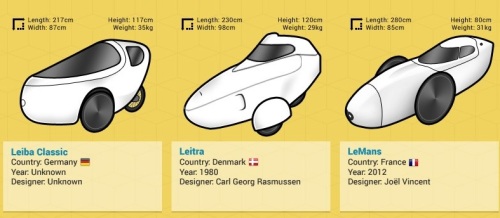 Mads Phikamphon from Denmark published an infographic depicting 27 velomobiles with their specifications and performance. It’s a handy overview for those who are considering to try one of these vehicles that blur the lines between cars and bicycles. The infographic was originally published at Cykelvalg. We leave the word to Mads:
Mads Phikamphon from Denmark published an infographic depicting 27 velomobiles with their specifications and performance. It’s a handy overview for those who are considering to try one of these vehicles that blur the lines between cars and bicycles. The infographic was originally published at Cykelvalg. We leave the word to Mads:
“Most people consider velomobiles as a rather new invention, but the first velomobiles were actually invented much earlier than most people think. In the 1930s you could buy a set of instructions to build your own “Fantom” – a velomobile for 2 persons made out of wood. Thousands of copies of the instructions were sold, but few bikes were built and soon the velomobiles were all but forgotten as cars got more and more popular. It wasn’t until the oil crisis in the 1970s that velomobiles again started to get some attention. A well recognized velomobile from that time is the “Leitra” that remains a popular model amongst many velomobile enthusiasts.”
“As you can see in the graphic below, there are now lots of models to choose between if you want a velomobile, although almost all of them share quite a few characteristics: 3 wheels, an aerodynamic body and room for just one person. Thanks to the aerodynamic body a velomobile is also the fastest HPV or Human Powered Vehicle around. In 2013 a “Velo X3” velomobile reached an amazing 134 km/h (83 mph) and many people expect the “Arion” velomobile to go even faster when it’s ready for testing in 2015. The only big problem that remains is that all the models are rather expensive. No velomobiles are being mass manufactured, so the price of a new velomobile remains at least $3000.” [Read more…]
Pedal Powered Farming
The Culticycle is a pedal powered tractor that can cultivate, seed, spray, or pull gear for most low horsepower tasks. We talked about the first prototype almost two years ago. A new version has now been released, built around a modular tractor frame. Tim Cooke explains us how it’s built and how it works: [Read more…]
